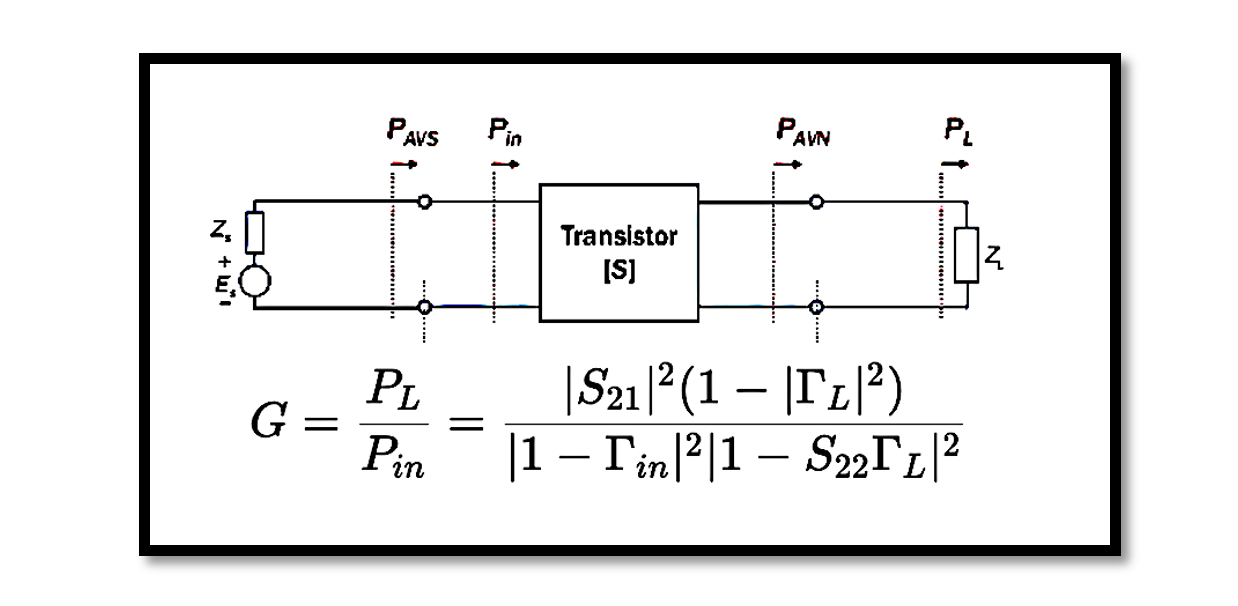
Available and Transducer Power Gain in Two-Port Networks: Derivation and Formulas
1. Introduction to Available and Transducer Power Gain:
Available power gain (GA) and transducer power gain (GT) are essential metrics in the characterization of two-port networks, especially in RF and microwave systems. They quantify the efficiency with which a network transfers power from the input to the output and are crucial for optimizing the performance of various electronic circuits.
2. Derivation of Available Power Gain Formula:
Let’s start by defining the key parameters involved in the derivation:
Pin: Input power
Pavs: Available power
PL: Load power
Starting with the expression for input power (Pin), it’s derived using the definition of reflection coefficient (Γ) and input voltage (Vs) as follows:

Now, to find the available power gain (GA), we use the expression for available power (Pavs) and power delivered to the load (Pavn). GA is the ratio of Pavn to Pavs:

Substituting the expressions for Pavs and Pavn, we get:

After simplification, we arrive at the formula for GA:

3. Introduction to Transducer Power Gain:
Transducer power gain (GT) is a fundamental parameter in the characterization of two-port networks, especially in RF and microwave systems. It quantifies the efficiency with which a network transfers power from the input to the output. Understanding GT is essential for designing amplifiers and optimizing the performance of various electronic circuits. Following a similar approach, we start with the expression for load power (PL) and then substitute ΓL=Γout∗:

Now, to find the ratio GT, we divide Pavn by Pavs:

Substituting the expressions for Pavs and Pavn, we get:

After simplification, we arrive at the formula for GT:

These formulas provide insights into the available and transducer power gains in a two-port network, crucial for understanding and designing amplifiers and other electronic systems.



